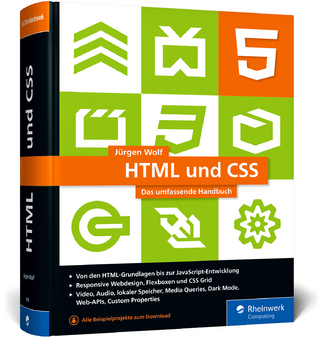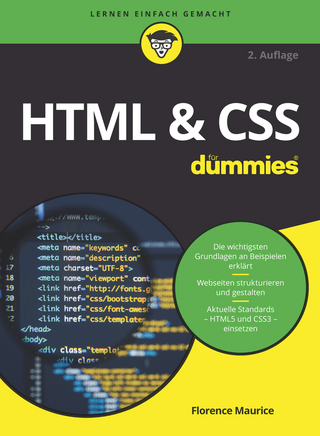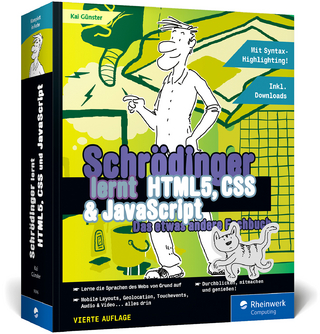
Programming Chrome Apps
O'Reilly Media (Verlag)
978-1-4919-0428-2 (ISBN)
Put your web app design skills to work by learning how to create powerful and portable Chrome Apps. With this practical book, you’ll learn how to build Google’s unique apps to behave just like native apps so they can interact with hardware devices, access external files, and send notifications.
Author Marc Rochkind takes you through a hands-on, objective tour of Chrome Apps, which run on any platform that supports the Chrome browser—including OS X, Windows, Linux, as well as Android and iOS. If you know how to work with HTML, CSS, JavaScript, and the DOM, you’re ready to get started.
- Learn how to build, run, and debug Chrome Apps step-by-step
- Use Chrome Apps to access local files, sync files, and external files
- Take advantage of key-value-pair APIs, including sync storage and IndexedDB
- Use WebSockets, Google Cloud Messaging, and other networking methods
- Display graphics and images with Canvas, SVG, and the Media Galleries API
- Use alarms, context menus, location, the camera, Bluetooth, USB, and other APIs
- Publish apps to the Chrome Web Store with the Chrome Dev Editor
Marc Rochkind has an MS in Computer Science (Rutgers, 1976) and worked for Bell Labs from 1970 to 1982, much of that time on parts of UNIX, especially the Source Code Control System, for which he is well known. His 1985 book, Advanced UNIX Programming, was the first book that explained how to program the UNIX kernel.Since leaving Bell Labs in 1982, he has had several management and non-management positions in various software companies and done lots of consulting. He started a venture-capital-backed company, XVTSoftware, in 1988, that provided tools to allow programmers to develop portable GUI applications--the first such tool. Later, he was the VP of Software at two venture-capital-backed companies, one with an employee-scheduling product, and one with an online-knowledge-base product. Currently he develops iOS, MacOS, and Windows apps (listed at basepath.com), does some consulting, and writes books.
Chapter 1Your First Chrome App
From Web Apps to Chrome Apps
Running a Chrome App
Using the Chrome Dev Editor
Differences Among Chrome Apps, Chrome Extensions, and Hosted Apps
Chrome App Restrictions
More on the Manifest
Permissions
Debugging Chrome Apps
Chrome Release Channels
Publishing a Chrome App
Chapter Summary
Chapter 2Local Files, Sync Files, and External Files
Local Files
Auto-Saving and Idle Events
Sync Files
External Files
Adding Backup by Using Retained File Entries
Chapter Summary
Chapter 3Local Storage, Sync Storage, and IndexedDB
Local and Sync Storage
IndexedDB
Chapter Summary
Chapter 4Networking and Messaging
Socket API
The XMLHttpRequest API
Identity API
WebSockets
Google Cloud Messaging
App-to-App Messaging
Notifications
Chapter Summary
Chapter 5Graphics and Imaging
Outputting Graphics
HTML5 Canvas
Scalable Vector Graphics (SVG)
Creating PDFs
Working with Images
The mediaGalleries API
Chapter Summary
Chapter 6Miscellaneous APIs
Alarms
Context Menus
Location
Text-to-Speech
System Queries
Camera
Bluetooth, USB, and Serial APIs
Internationalization and Localization
Chapter Summary
Appendix Modal Dialogs
Appendix Registering Chrome Apps with Google
Appendix Using Google Cloud Messaging
Appendix Using Cordova to Build Chrome Apps for Mobile Devices
| Erscheint lt. Verlag | 27.1.2015 |
|---|---|
| Verlagsort | Sebastopol |
| Sprache | englisch |
| Maße | 187 x 233 mm |
| Gewicht | 480 g |
| Einbandart | Paperback |
| Themenwelt | Informatik ► Web / Internet ► HTML / CSS |
| Informatik ► Web / Internet ► JavaScript | |
| Informatik ► Weitere Themen ► Smartphones / Tablets | |
| Schlagworte | Browser • Google Chrome • Mobile Apps • plattformübergreifend |
| ISBN-10 | 1-4919-0428-3 / 1491904283 |
| ISBN-13 | 978-1-4919-0428-2 / 9781491904282 |
| Zustand | Neuware |
| Haben Sie eine Frage zum Produkt? |
aus dem Bereich


